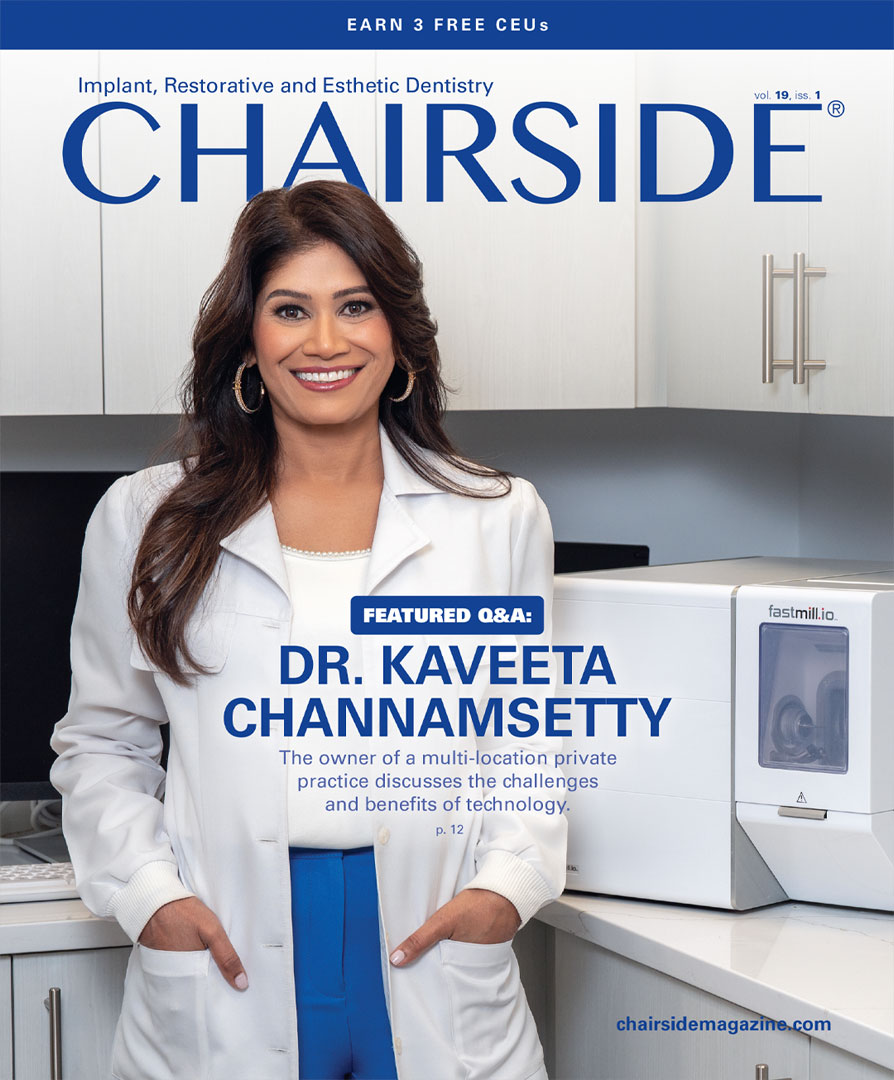Letters to the Editor
Dear Dr. Kosinski,
In your article on socket grafting and implant placement (Chairside® magazine, Vol. 18, Iss. 2) you documented a case where the lower right molar was extracted, the socket grafted and an implant placed after healing. You stated that you did not immediately place the implant at the time of extraction because significant buccal bone was missing. What are your specific criteria for immediate implant placement after extraction?
DMD,
Poughkeepsie, New York
Dear Doctor,
Here are some factors that should be assessed when determining if immediate implant placement is appropriate after extraction:
- Upon removal of any tooth, evaluate the socket for granulation and facial plate bone loss. If there is sufficient bone present, the implant can be placed immediately.
- If there is any purulence or other active signs of infection, do not immediately place an implant. It may be possible to graft the site, assuming most granulation is removed and there is active red blood bleeding.
- If the facial defect extends beyond 5 mm, graft with allograft and passively place the membrane at least 2 mm beyond any defect. The membrane must remain intact for at least six weeks for the integration to be predictable.
Following these guidelines will provide high success rates for immediate placement after extraction.
Sincerely,
Timothy F. Kosinski, DDS, MAGD
Dear Dr. Manalili,
Thanks for showing the beautiful Smile Transitions™ case in your article “Test-Driving Future Treatment with Smile Transitions” (Vol. 18, Iss. 2) that solved a difficult esthetic problem. For patients that are financially challenged and may not be able to quickly proceed with definitive treatment, how long can we leave the Smile Transitions in place? Are they under warranty?
DDS,
St. Louis, Missouri
Hello Doctor,
Smile Transitions are covered by the Glidewell one-year limited warranty and no-fault remake policy. The length of time any provisional appliance can be worn varies on a case-by-case basis and is largely dependent on the oral health of the patient.
Best,
Taylor Manalili, DDS


Although not designed for long-term use, Smile Transitions offer patients a temporary, esthetic and functional solution that they can utilize until their final restoration is ready to be seated.
Hello Dr. Koka,
In your article describing alginate impression techniques for complete dentures (Vol. 18, Iss. 2), you explain that this will often yield some border overextensions that will need to be adjusted. How will I know where these over-extensions are and to what extent they need adjustment? Is there a way to make this adjustment prior to the delivery appointment?
DDS,
Nashville, Tennessee
Dear Doctor,
With experience, yes, one can learn how to read an alginate impression and the resultant model in such a way as to predict where overextensions are present. The buccal shelf and retromylohyoid flange tend to be the most common areas in the mandible. In the maxilla, the most common area is the labial flange in the anterior. The dentures can be trimmed ahead of time to save chair time.
Regards,
Sreenivas Koka, DDS, M.S., Ph.D., MBA, FACD




